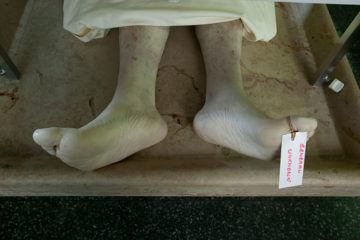Amy Maxmen in Nautilus:
 Every time he bent over a freshly dead body, pathologist George Martin pondered the diversity before him. Although his cadavers almost always belonged to the elderly, they varied dramatically. One would have intestines pocked by polyps. Another’s arteries were plugged with plaque. Variety even existed within the same types of disease. For instance, the location of beta amyloid deposits in the brain of people who’d suffered from Alzheimer’s differed significantly. If each type of malady shared the identical underlying cause, bodies ravaged by that cause should look similar in death. But they didn’t. “I never saw two people who had aged in the same way,” Martin says.
Every time he bent over a freshly dead body, pathologist George Martin pondered the diversity before him. Although his cadavers almost always belonged to the elderly, they varied dramatically. One would have intestines pocked by polyps. Another’s arteries were plugged with plaque. Variety even existed within the same types of disease. For instance, the location of beta amyloid deposits in the brain of people who’d suffered from Alzheimer’s differed significantly. If each type of malady shared the identical underlying cause, bodies ravaged by that cause should look similar in death. But they didn’t. “I never saw two people who had aged in the same way,” Martin says.
Martin read everything he could on aging. He took particular interest in observations showing how organisms ranging from clonal yeast to human twins had wildly different lifespans. One of the more dramatic examples were reports of tiny worms, Caenorhabditis elegans, that varied in lifespan by up to five-fold even when the worms were genetically identical and lived in identical laboratory surroundings.
Biologists know how chance events in the environment (such as getting hit by a bus) impact lifespan. And they understand the role of chance in genetics (such as inheriting genes for Huntington’s disease and certain cancers). But it now seems a third realm of uncertainty emerges as animals grow older, causing them to age in different ways. Researchers are only beginning to figure out the basis of biological fluctuations that build up over time. Some result from mutations that slip into the genomes within cells as they replicate. Others occur because of changes in molecules that either shut off or activate genes.
More here.
